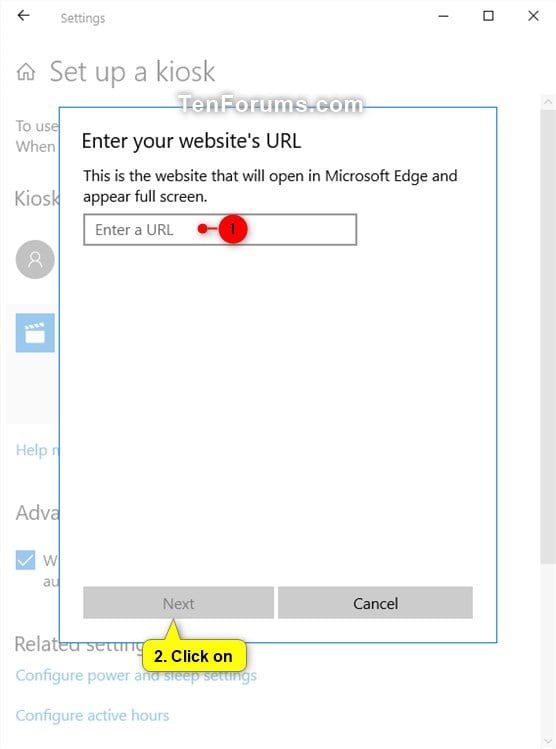How to Create a Guest Account and Activate Kiosk Mode on Windows 10
Table of Content
Whereas, with a Windows Kiosk software like Mobile Device Manager Plus you can provision Windows 10 and Windows 11 devices into single app Kiosk mode or multi-app Kiosk mode. Alternatively, you could just delete the user account for which you enabled the kiosk mode. To delete that account, you'll need to use two commands. Now that you have your guest account set up, you can further restrict its usage using Assigned access, also known as Kiosk mode.
The device will be locked only to the selected app and the user will not be able to access any other apps or settings on the device, including the Start Menu. Users can sign out of the account using the Ctrl+Alt+Del shortcut. Depending on the app you choose, you may need to enter a few more details. Just fill in the details that you see along the way.
How to enable Windows 10 Kiosk Mode or Windows 11 Kiosk Mode with Assigned Access?
In case of managed apps, these are automatically distributed via MDM. Forsilent installation of apps, they must be present in the App Repository. I.e, Kiosk mode is not supported for administrator accounts.

Here we are selecting the second one “As a public browser” and then click on the Next button. Scroll down and you will find the Setup a Kiosk option. Just under which Assigned access option is available and that you have to click in order to assign your current machine for Kiosk configuration. Time to restart the browser and then Next to end the setup process. We are selecting Microsoft Edge browser to make it “Windows 10 kiosk browser system” and press NEXT button. Device based Windows Kiosk Mode is supported for Windows 10 Pro , Enterprise and Education editions, and Windows 11.
Why do we need a Windows 10 or Windows 11 Kiosk software?
Kiosk mode is not available for Windows 10 Home edition devices. You can choose from any of your Windows 10 apps. In the “Other Properties”pop-up, click the “Member Of” tab and then “Users” from the list. This will stop them from being able to perform the actions of a regular user. These offerings provide portals to avoid security issues and other stumbling blocks that hamper organizations from providing more... The above action will open the app selection menu.
As an avid writer, he is also working on his debut novel. Remember to switch out “Visitor” for your username of choice if you chose something different in the previous step. You can switch out Visitor for any name you like if you’re creating multiple accounts. PressStart and type “Command Prompt”, then click “Run as administrator” on the right-hand side. From there, you will be prompted to set up an account.
What is Kiosk Mode a.k.a. Assigned Access
However, if you're trying to just restrict access for other users rather than limiting them to one or a couple of apps, there's a better way to go about it. You'll need to determine the app that you want to provision under the kiosk mode. You can only allow UWP apps (aka metro-style apps). Windows 10 isn't the first Microsoft OS that has the kiosk mode. However, Microsoft redesigned the feature in 2018 to make configuring it a lot more user-friendly. With a few simple commands, your guest account is all set up.
In my case, the Edge browser with its default home page. In the next screen, enter the URL of the homepage and set the interval when the Edge browser will reset to the homepage. You can only assign one app in the Kiosk mode. Though it is possible to assign multiple apps, the process requires extensive customization and configuration. But, if you are interested, you can know more from here. As you can tell, Kiosk mode is quite useful to display digital signs, photo gallery, or browse the internet using Microsoft Edge in public areas.
While this utility is good intentioned, it falls short in many respects. The first and most glaring problem is it only works on Windows 10 Pro, Enterprise, or Education - it is NOT available on Windows 10 Home. Thus, users will need to pay a high premium to use it and operate it with a host of system features not needed for specific purpose systems. Also, Kiosk Mode only supports one app and is not viable for those setups requiring a locked down system with more than one application available.

On the left side, you will find an option called “Family & Other Users“. Select the app which you want to assign in Kiosk Mode.
For further security, you may want to learn how to encrypt your folders and files or enable secure sign-in. When IT teams manage employees using remote desktops, they should make sure they can set up and troubleshoot peripheral devices, ... These tools can proactively alert IT when there are device problems that may require attention relating to storage, CPU usage, system errors or going offline. The MDM tools' remote kiosk management also help IT ensure the kiosk devices receive the OS updates they need.

Click on the “Next” button to continue. Enabling Windows 10 Kiosk Mode or Assigned Access is as easy as creating a new local user account without the security questions. Just follow the below steps and you’ll be golden. The kiosk mode is primarily intended to quickly configure Windows 10 PCs as information kiosks, and can be used to restrict user access to the PC as well.
In fact, features of the opened app are severely limited to make sure the kiosk mode is secure. For instance, in the Edge browser, users cannot access its settings, change homepage or install extensions. The app you assign to the Kiosk mode is limited in terms of functionality and features to ensure the security of the device. For instance, if you chose the Edge browser, the users cannot access it’s settings page or install extensions. If you do not see either of these options listed, you may be logged into a standard user account. In this case, you will need to log into the administrator account to see this option.

Once you've configured kiosk mode on your Windows 10 PC, it will always sign in automatically into a user account with restricted access and run only one app at a time. Nobody that has access to the device will be able to view the desktop, multitask, or modify anything on it. You'll be able to restrict a guest user's access to one or more Universal Windows Provisioning apps and gate their access to anything else on the machine. You're still using a PC with Windows 10 that's prone to the occasional freezing.
Just use the net user command to get a list of the user accounts on the PC and you should find the standard user account you created for the kiosk mode in the list. The process to configure kiosk mode isn't complex. All you need to do is set up a standard user account, choose the app, and add relevant settings for them. Microsoft has recently introduced a new Kiosk Mode feature in Windows 10. At first glance, this feature seems appealing as it incorporates the ability to run a single app in a locked down state.

Comments
Post a Comment